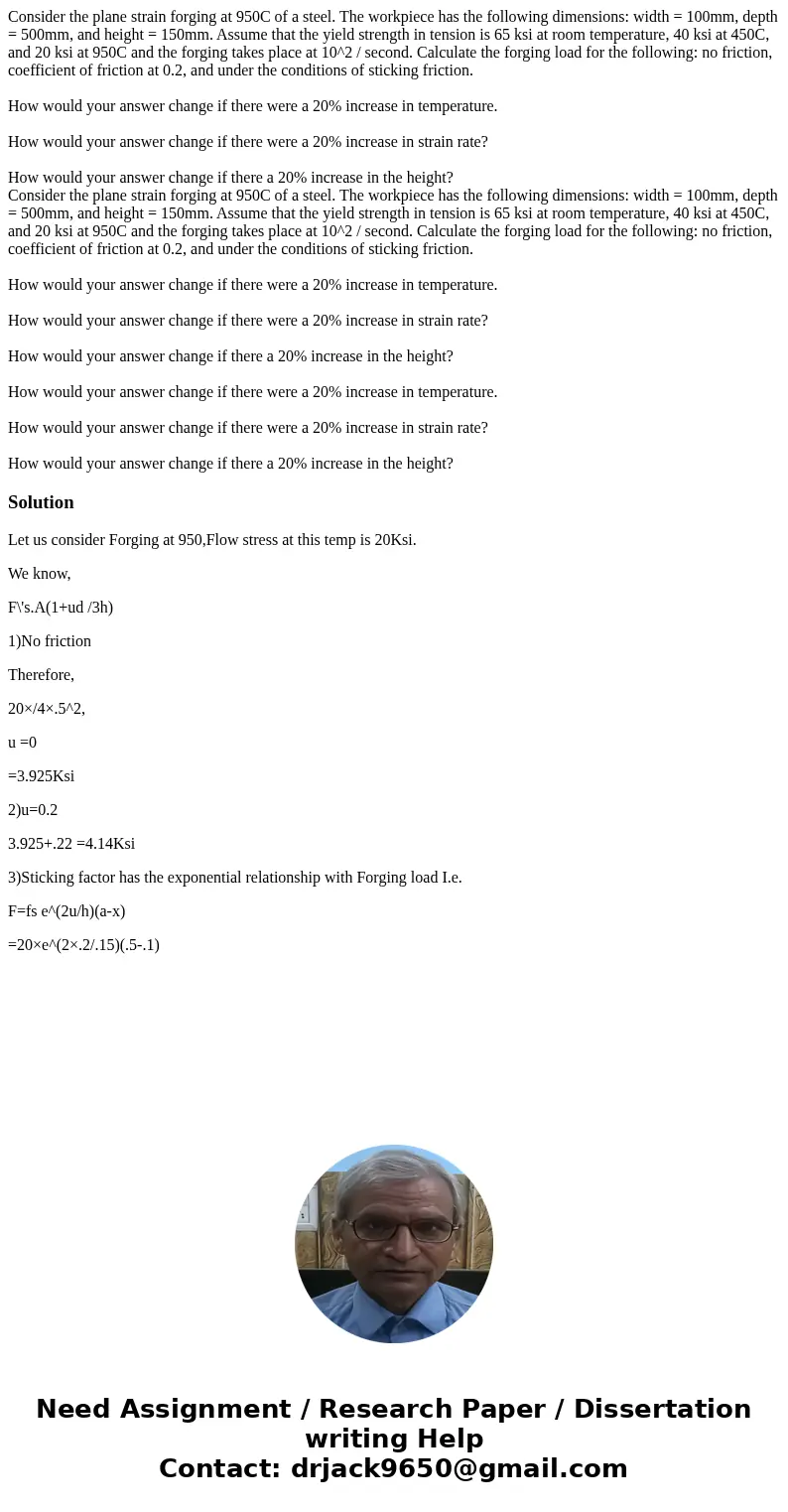Consider the plane strain forging at 950C of a steel The wor
Consider the plane strain forging at 950C of a steel. The workpiece has the following dimensions: width = 100mm, depth = 500mm, and height = 150mm. Assume that the yield strength in tension is 65 ksi at room temperature, 40 ksi at 450C, and 20 ksi at 950C and the forging takes place at 10^2 / second. Calculate the forging load for the following: no friction, coefficient of friction at 0.2, and under the conditions of sticking friction.
How would your answer change if there were a 20% increase in temperature.
How would your answer change if there were a 20% increase in strain rate?
How would your answer change if there a 20% increase in the height?
Consider the plane strain forging at 950C of a steel. The workpiece has the following dimensions: width = 100mm, depth = 500mm, and height = 150mm. Assume that the yield strength in tension is 65 ksi at room temperature, 40 ksi at 450C, and 20 ksi at 950C and the forging takes place at 10^2 / second. Calculate the forging load for the following: no friction, coefficient of friction at 0.2, and under the conditions of sticking friction.
How would your answer change if there were a 20% increase in temperature.
How would your answer change if there were a 20% increase in strain rate?
How would your answer change if there a 20% increase in the height?
How would your answer change if there were a 20% increase in temperature.
How would your answer change if there were a 20% increase in strain rate?
How would your answer change if there a 20% increase in the height?
Solution
Let us consider Forging at 950,Flow stress at this temp is 20Ksi.
We know,
F\'s.A(1+ud /3h)
1)No friction
Therefore,
20×/4×.5^2,
u =0
=3.925Ksi
2)u=0.2
3.925+.22 =4.14Ksi
3)Sticking factor has the exponential relationship with Forging load I.e.
F=fs e^(2u/h)(a-x)
=20×e^(2×.2/.15)(.5-.1)

 Homework Sourse
Homework Sourse